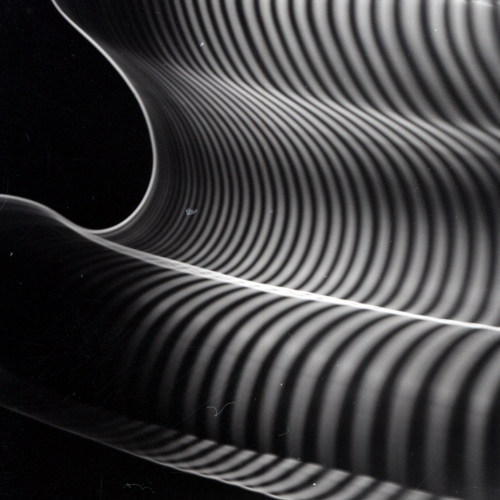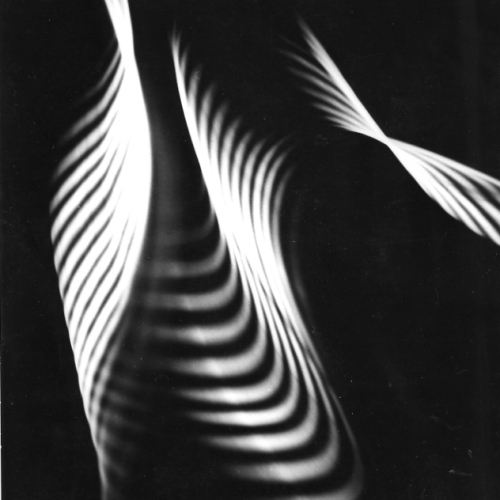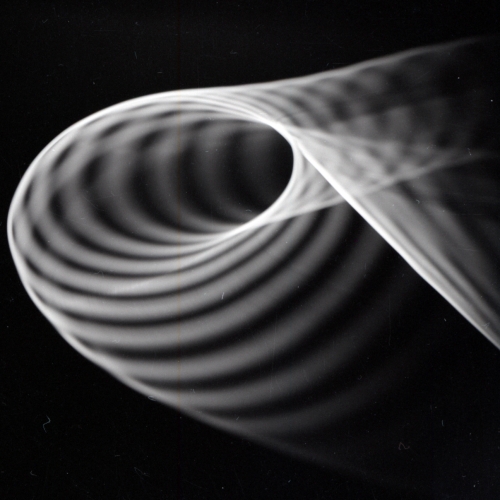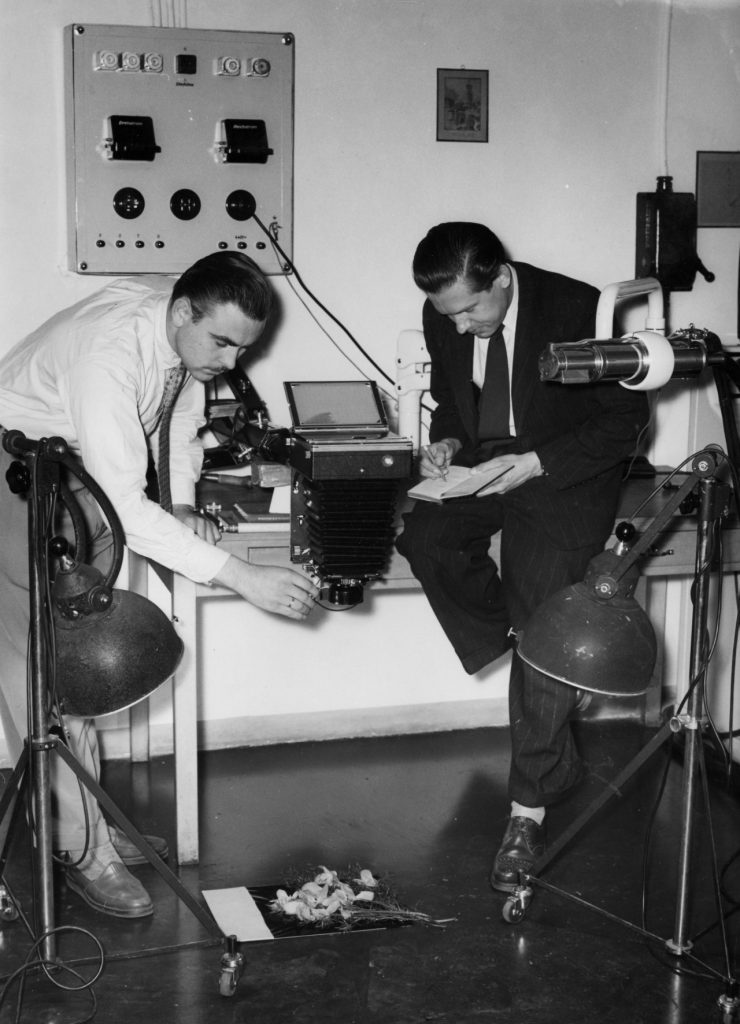















Light Forms Series (1953-1955)
Light Forms, a series created with Andreas Hübner, a journeyman in the Siemens photo lab at the time, is an early example of generative photography. In contrast to depictive photography, the Light Forms are the realization of Herbert W. Franke’s abstract pictorial ideas–or, to put it another way, visual inventions that display forms and structures that are not already present but can only be formed or seen by special technical means. They are a continuation of the light graphics of the 1920s, but this time we’re dealing with motifs that were developed in a methodical manner under physically determined parameters. Mechano-optical own structures were employed for the Light Forms.
The main instruments were white painted, illuminated wires that were moved with the aperture open. The background was illuminated by the projection of a chiaroscuro line grid. Some subjects were also created with a rotating disk set up in the foreground with free gaps through which the illuminated wire was shot with the aperture open. The rotating disk leads to a stroboscopic effect. A special case were the so-called Spatial Studies, in which the wire was not guided by hand, but suspended and set in rotation.




Click here for the other series of the work group Generative Photography:
Series Band Forms
Series Micro Paintings
Series Spatial Studies
Series Wave Forms
